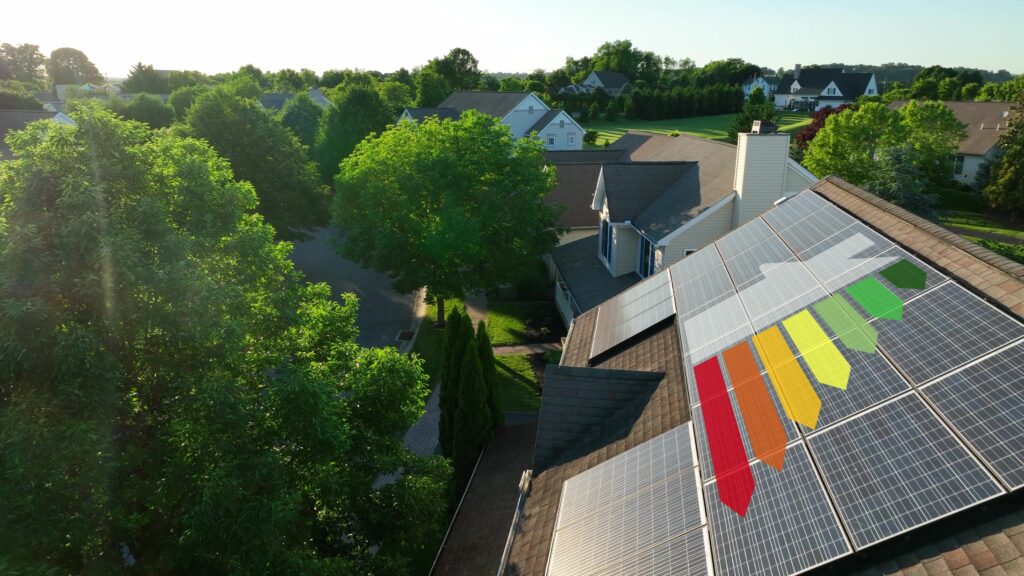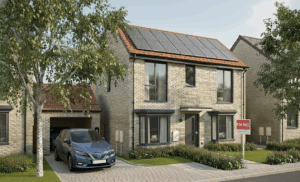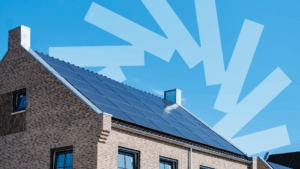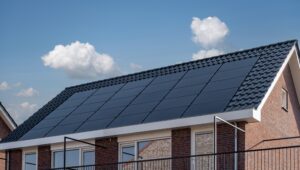The UK housing market has never been more focused on energy efficiency. Buyers want homes that offer energy independence and lower running costs. Lenders offer better mortgage rates for them. Planning authorities are increasingly baking higher EPC targets into local policy, and a minimum EPC C rating is widely expected to become mandatory across all housing.
In practice, EPC B is already commonly viewed as the baseline for new builds. For housebuilders, this means a stronger focus on SAP scores, which sit at the heart of EPC ratings. Achieving a new build EPC B rating (SAP score of 81 or higher) has become essential not just for compliance, but to stay competitive.
In this blog, we’ll take a closer look at these ratings systems – and how rooftop solar and battery storage is one of the most effective and scalable ways to improve SAP performance, boost EPC outcomes, and deliver homes that meet the expectations of today’s market.
What Are EPC Ratings and SAP Scores?
EPC stands for Energy Performance Certificate. Every home sold or rented in the UK is legally required to have one, and it shows how energy efficient the property is, rated on a scale from A (most efficient) to G (least efficient). EPC ratings are based on a Standard Assessment Procedure (SAP) score, which measures the predicted energy cost and carbon emissions of a home. The SAP score and EPC rating for a home is presented in a standard, easy to understand graphic that helps home buyers understand the efficiency of a home.
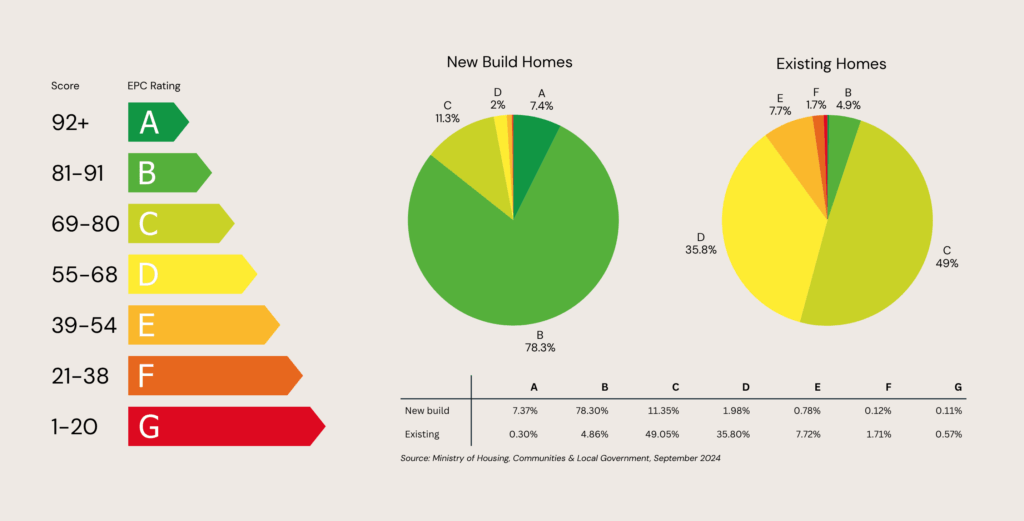
The SAP score is a numerical value (typically between 1 and 100+) that determines which EPC band a home falls into.
SAP assessments consider a range of factors: insulation, heating systems, ventilation, lighting, and on-site renewable energy sources. For new builds, improving the SAP score is the clearest route to achieving the EPC B rating increasingly demanded by lenders, planners and buyers alike.
How Solar Improves SAP and EPC Ratings
Rooftop solar and battery storage systems generate clean electricity directly on site, significantly reducing the amount of energy a home needs to draw from the grid. This is because energy drawn from the grid has an associated carbon cost, currently around 0.16kg of CO₂ emitted per kilowatt-hour (kWh). In contrast, solar energy produces no carbon emissions.
Therefore, the more energy provided by solar, the lower the home’s carbon footprint and the better its overall SAP score and EPC rating.
Even a modest solar array can lift a home’s SAP score by several points. For many developments, this can be the difference between a C and a B rating.
Why Battery Storage is Crucial: Smarter, More Efficient Homes
Battery storage now contributes directly to SAP ratings, enhancing a home’s energy performance. By storing surplus energy, batteries help homes rely more on renewable energy, which boosts their overall energy efficiency and reduces their carbon footprint.
Batteries store excess solar energy generated during the day for use in the evening, when demand and electricity costs peak. This increases the proportion of solar energy a home can draw from on-site, improving the home’s energy efficiency and reducing reliance on imported energy.
As energy modelling evolves and grid flexibility becomes more valuable, battery storage plays an increasingly important role in how energy performance is assessed, providing homeowners with lower bills, better resilience, and higher appeal for energy-conscious buyers.
Practical Integration at Scale
Gryd’s fully-funded smart solar and battery storage systems make it easier than ever for housebuilders to meet these standards at scale – and gives developers a clear pathway to achieving EPC A ratings at no cost, helping them differentiate their homes in an increasingly competitive, sustainability-driven market.
By removing the cost and complexity of solar ownership and long-term maintenance, Gryd enables developers to integrate high-performing solar technology across entire developments without taking on the financial or operational burden. By contrast, deep fabric improvements or advanced HVAC systems can be costly and complex.
Ready to Build Smarter?
Speak to Gryd today about how our smart solar and battery systems can help your developments meet EPC targets, enhance buyer appeal, and future-proof against tightening energy regulations – all without upfront capital or long-term maintenance obligations.

